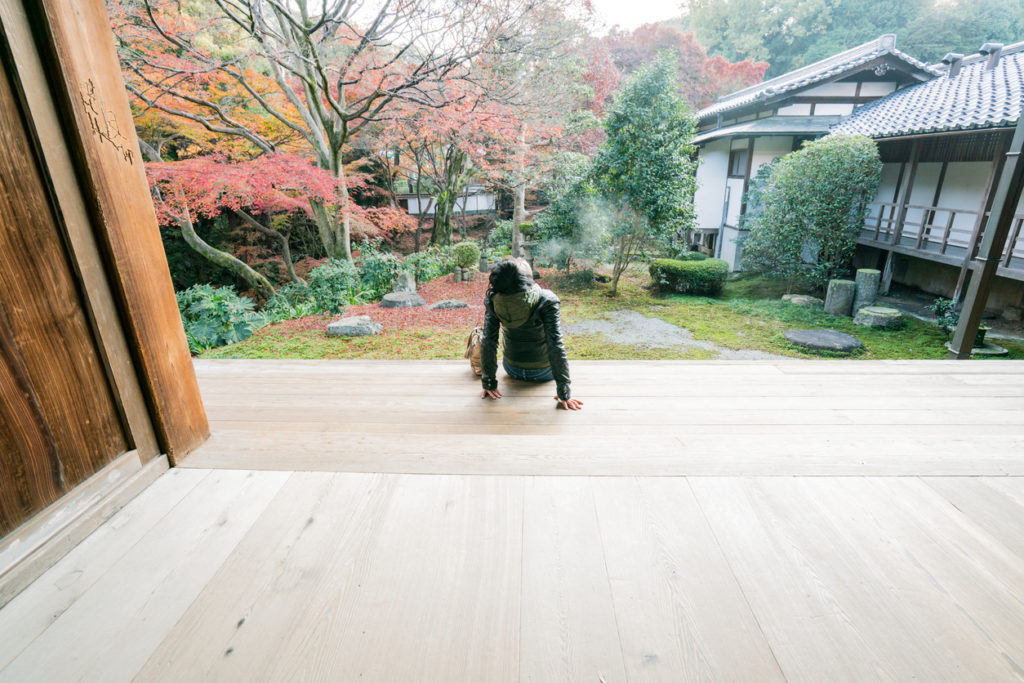Wabi-Sabi: The Japanese Art of Finding the Beauty in Imperfections
Wabi-Sabi: The Japanese Art of Finding the Beauty in Imperfections
 Rather than find faults in cracks, tears and other imperfections, the Japanese concept of wabi-sabi encourages us to appreciate that nothing is truly perfect or permanent. From a new crack in a favorite plate or tear in the elbow of a beloved jacket to life’s much more monumental losses, wabi-sabi gives us a way to frame these challenges and allows us to find strength and beauty in the process of healing and repair. With resources spanning everything from crafting how-tos to mindful self-care after a tragedy or loss, the list below provides a helpful introduction into the Japanese art of finding beauty in life’s imperfections. Also check out for an inspired craft tutorial.
Rather than find faults in cracks, tears and other imperfections, the Japanese concept of wabi-sabi encourages us to appreciate that nothing is truly perfect or permanent. From a new crack in a favorite plate or tear in the elbow of a beloved jacket to life’s much more monumental losses, wabi-sabi gives us a way to frame these challenges and allows us to find strength and beauty in the process of healing and repair. With resources spanning everything from crafting how-tos to mindful self-care after a tragedy or loss, the list below provides a helpful introduction into the Japanese art of finding beauty in life’s imperfections. Also check out for an inspired craft tutorial.
“Treat yourself with the same kindness and understanding you would offer a close friend. Embrace your flaws as part of your uniqueness. Strive for progress rather than perfection. Set achievable goal that allow room for mistakes and setbacks,” he added.
Implementing wabi-sabi into everyday thinking
 Like with the resurgence of ikigai in more contemporary mainstream society, elements of wabi-sabi can be directly transferable to everyday life. Many of us live in a state of constant longing, unsatisfied with what we have, striving to achieve an unattainable level of perfectionism.
Like with the resurgence of ikigai in more contemporary mainstream society, elements of wabi-sabi can be directly transferable to everyday life. Many of us live in a state of constant longing, unsatisfied with what we have, striving to achieve an unattainable level of perfectionism.
Media, social influence, constant comparisons to others who we perceive are doing better, there’s always something just on the horizon that draws our attention away from the positivity in our lives. Although there’s no harm in wanting to be better, there’s a lot to be said for taking the time to appreciate what we have.
You can cultivate a wabi sabi lifestyle by trying the following
- Declutter your living space and keep the things you need stored away when you’re not using them. This will help convey a sense of tranquility in your surroundings, which will support a serene state of mind.
- Choose used items made from natural materials over newly manufactured synthetic products when possible. This will foster a sense of connection to nature and the earth.
- Learn to appreciate the elegant simplicity of a “less is more” lifestyle, such as a single branch and stem in a worn ceramic pot rather than a large bouquet of flowers in a perfectly symmetrical vase.
- Slow down the pace of your life when possible and leave plenty of time for rest between tasks. Prevent overwhelm by refusing to glorify the busyness that can lead to chronic stress and poor mental health.
- Declutter your living space and keep the things you need stored away when you’re not using them. This will help convey a sense of tranquility in your surroundings, which will support a serene state of mind.
- Choose used items made from natural materials over newly manufactured synthetic products when possible. This will foster a sense of connection to nature and the earth.
- Learn to appreciate the elegant simplicity of a “less is more” lifestyle, such as a single branch and stem in a worn ceramic pot rather than a large bouquet of flowers in a perfectly symmetrical vase.
- Slow down the pace of your life when possible and leave plenty of time for rest between tasks. Prevent overwhelm by refusing to glorify the busyness that can lead to chronic stress and poor mental health.
Appreciate the beauty of all things, especially the great beauty that hides beneath the surface of what seems to be broken.
An ancient form of art stems from wabi-sabi, whereby you mend broken objects with gold fillings, giving them “golden scars.” It’s known as Kintsugi.
Think of a bowl or teapot that has been dropped onto the floor. What would you do with it? You’d most probably pick up the pieces and throw them away. But not with Kintsugi. Here, you bring the pieces of broken pottery back together and glue them with liquid gold. Wouldn’t that make them imperfect, permanently and inevitably flawed, but somehow, more beautiful?
Kintsugi reminds us that there is great beauty in broken things because scars tell a story. They demonstrate fortitude, wisdom, and resilience, earned through the passage of time. Why hide these imperfections or golden scars when we are meant to celebrate them? Example of a Kintsugi bowl. Source.
Example of a Kintsugi bowl. Source.
The idea here is simple: There will be many times in your life when you will feel broken. There will be events that will leave you with emotional or physical scars. Do not hide in the shadow of your own sunshine. Do not dim your own light with the darkness of a cloud. Instead, let those scars be redrawn with gold.
Consider that your failures are there to teach you how not to do things, your mistakes are there to teach you the importance of forgiveness, and your wrinkles are there to remind you of your laughs that caused them.
Start to embrace this concept of Kintsugi—that broken objects are not to be hidden, they are to be displayed with pride—and you’ll slowly begin to realize how you’re dissolving that image of perfection, and replacing it with a new divine concept of beauty: The entirety of you.






























